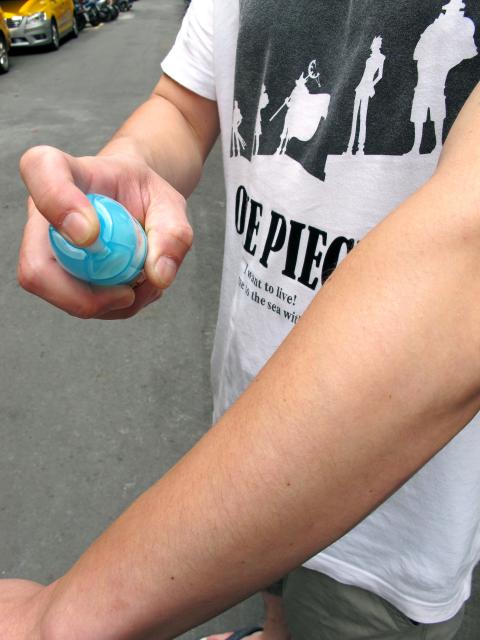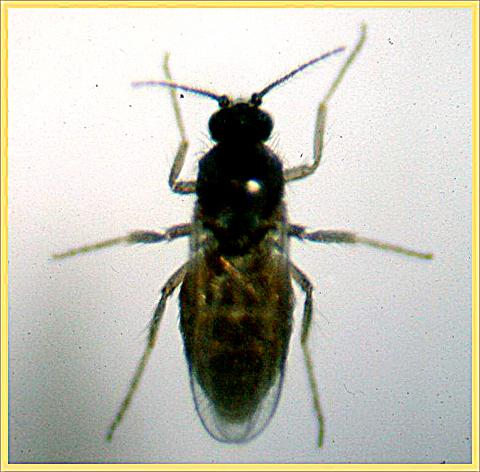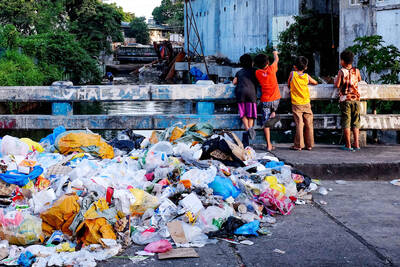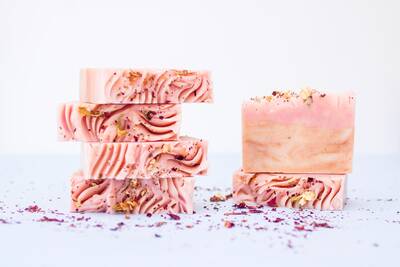Mosquitoes are wreaking havoc throughout the Taitung area. There is not any natural enemy to fight the vermin and a successful strategy for preventing mosquitoes has yet to be found. Health and environmental agencies are urging individuals to take the necessary precautions in protecting themselves, saying that by getting rid of moss, the primary breeding grounds for mosquitoes, you can keep mosquito larvae from spreading.
“It’s terrible. Getting bitten is really painful. My lower leg is completely covered with inflamed red bites,” says a local resident named Yu Li-min. Every afternoon when she goes outside to clean and sweep the area around her house, in just half an hour she has bites all over her body, particularly her lower leg. Spraying mosquito repellent does not help, either, so she simply stays indoors.
The Taitung City Office has sent personnel out to exterminate extensively, which has proven ineffective. The forcipomyia taiwana, a biting midge native to Taiwan, is an ecological problem, not a health problem, according to the local government, which says that without a natural enemy, the best preventative method is taking away the food source of both the larvae and the pupae. Spraying pesticides or disinfectant only works to control the problem without solving it, and could possibly result in the insect building up a resistance. The government urges people to keep their surroundings clean and protect themselves by wearing long-sleeve shirts, pants, socks and shoes, and avoid staying under shady trees, in halls, pavilions or arcades during peak times when mosquitoes are out feeding.

Photo: Chen Wei-tzu, Liberty Times
照片:自由時報記者陳慰慈
Taitung Public Health Bureau Director Daniel Lu says that the Taiwanese mosquito is different from other mosquitoes. Although it does consume blood, there is currently no medical record of it spreading malaria, dengue fever or any other viruses. The larvae of forcipomyia taiwana mainly subsist on moss, so getting rid of moss can keep them from gestating and reproducing and reduce their numbers. The female biting midge usually goes out to feed between noon and dusk, and typically flies low to the ground, biting people’s lower leg, the back of the arm and elbows. Some people experience itching and inflammation after being bitten, while allergic reactions occur in severe cases.
Lu would like to remind people not to scratch the bites after being bitten so as to avoid breaking the skin and it becoming infected. You can apply mosquito repellant, green oil or mint oil ointments to stop the itching, or use medicine approved by your physician, he says.
(Liberty Times, Translated by Kyle Jeffcoat)

Photo: Hung Mei-hsiu, Liberty Times
照片:自由時報記者洪美秀
「太恐怖了,感覺叮咬疼痛,整個小腿就已布滿紅腫包!」婦女尤麗敏說,每逢下午在戶外清掃住家環境,不到半個鐘頭,全身就被叮咬多處,尤其是小腿,噴了防蚊液也沒用,她都不敢亂出門。
台東市公所數度動員全面消毒,但成效有限。縣環保局表示,學名為台灣鋏蠓的小黑蚊為台灣原生種,屬生態問題,非環境衛生問題,由於無天敵,最好的防治方法就是阻斷成蟲及幼蟲的食物來源,噴藥消毒治標不治本,還可能造成抗藥性,但仍呼籲民眾做好個人防護及環境整理,包括穿著長袖、長褲及鞋襪,避開小黑蚊吸血時段進入樹蔭、走廊、涼亭、騎樓等場所。
衛生局長盧道揚表示,小黑蚊不同於其他蚊子,雖然嗜血,但截至目前尚未發現有傳染虐疾、登革熱及其他疫情的病例;小黑蚊幼蟲的孳生主要來自青苔,清除青苔可避免造成產卵繁殖環境及減量。小黑蚊雌蟲嗜血,出沒時間約在中午至傍晚時段,習性低飛,多叮人體小腿、手背、手肘等部位;部分被叮咬民眾會產生奇癢、紅腫等症狀,嚴重者則會有過敏反應。
他並提醒民眾被叮咬時切勿搓抓,以免抓破皮造成感染,可擦抹防蚊液或綠油精、薄荷油等藥膏止癢,或在醫師指示下用藥。
(自由時報記者陳賢義)

Talks aimed at striking a landmark global treaty on plastic pollution fell apart Friday last week as countries failed to find consensus on how the world should tackle the ever-growing scourge. The talks in Geneva — called after the collapse of the fifth and supposedly final round of talks in South Korea late last year — opened on Aug. 5. Negotiators from 185 nations worked beyond last Thursday’s deadline and through the night in an ultimately futile search for common ground. A large bloc wants bold action such as curbing plastic production, while a smaller clutch of oil-producing states want to

Last year, China’s push for the network certificate and internet ID system sparked widespread debate. The internet ID assigns users a unique code linked to their personal information without revealing their full identity, while the network certificate serves as a digital credential, enabling users to verify their identity across various platforms. This bold policy requires Chinese citizens to connect their online activities to their real identities. An internet “real-name system” demands that every user provide their actual identity information before accessing online services. The goal is to prevent online crime, cyberbullying, and harmful content. China has implemented a comprehensive real-name verification

A: Early this month, Taiwanese pitcher Teng Kai-wei of the San Francisco Giants was called up from Triple-A. B: It’s just awesome. Teng became the 17th Taiwanese to be called up to the majors last year. This marks his second call-up. A: And this time, his jersey number has changed from 70 to 66. B: Who else is likely to be moved up next? A: According to the Major League Baseball (MLB) Web site, Lin Yu-min, Zhuang Chen Zhong-ao, Lee Hao-yu and Cheng Tsung-che are all rising new stars. A: 美職舊金山巨人隊本月初決定,將小聯盟3A投手鄧愷威升上大聯盟! B: 太棒了,他去年曾打進大聯盟,是台灣第17位打進大聯盟球員。 A: 上次他大聯盟背號為70號,這次背號則改為66號。 B: 還有哪些台灣選手有機會挑戰大聯盟? A:

Dos & Don’ts — 想想看,這句話英語該怎麼說? 1. 許多聽眾出席演講。 ˇ A large audience attended the speech. χ A large number of audience attended the speech. 註:audience 為聽眾或觀眾的總稱,不是個別的人。「聽眾多」應說 a large audience,「聽眾少」應說 a small audience。 2. 他的衣服快穿破了。 ˇ His clothes are almost worn out. χ His clothes is almost worn out. 註:clothes 統指衣服,只有複數而且不能與數詞連用。具體表示某一種衣服的名詞可有單複數,如 garment、dress、coat 或 overcoat 等。「一套衣服」的量詞應該用 a suit of clothes,指上衣和褲子或裙子布料、款式一致的整套衣服。 3. 你們是日本人,他們是英國人。 ˇ You are Japanese. They are English/Britons. χ You are Japanese. They are Englishmen. χ You are Japanese. They are Englishman. 註:表示民族的名詞,其單複數形式不定,舉例如下: 單數 / 複數 a Chinese / Chinese 中國人 a Japanese / Japanese 日本人 a Russian / Russians 俄國人 a German / Germans 德國人 an American / Americans 美國人 an Englishman / Englishmen a Briton / Britons 英國人 a Dutchman /